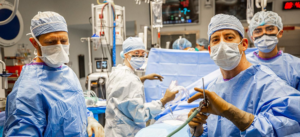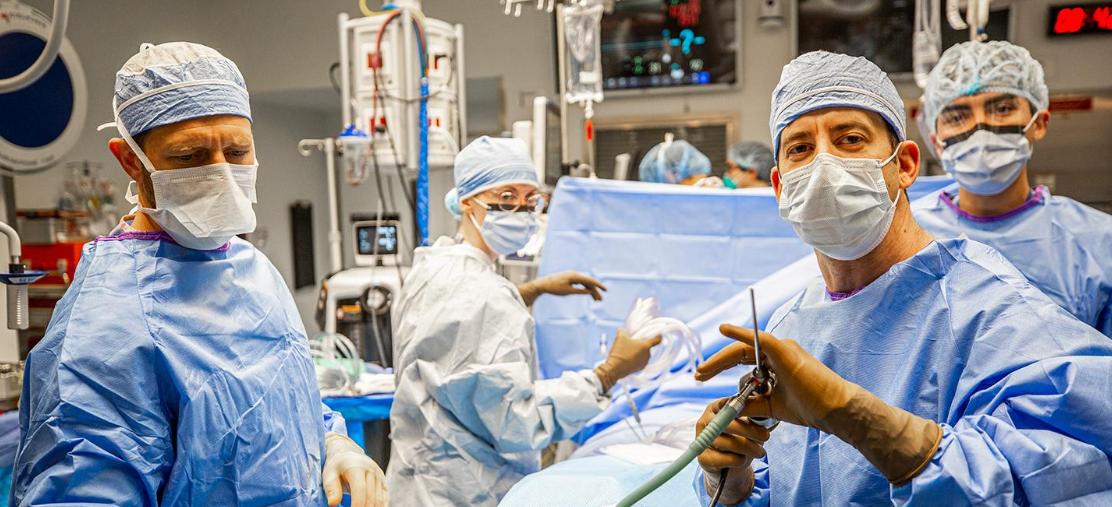Top Neurosurgery Success Stories: Real-Life Patient Accounts
Neurosurgery is often regarded as one of the most complex and serious fields of medicine. The complexity of these life-changing procedures weaves a tapestry of hope, resilience, and triumph. Real-life stories of patients who have overcome daunting medical challenges through neurosurgery are strong testaments to the transformative power of this specialty. These stories are not only incredibly inspiring but also form the basis of great progress that has continuously been made within neurosurgical techniques and technologies.
Here are some amazing stories of success, as neurosurgery has left its mark in the field of changing lives and giving a new lease on life to patients worldwide.
1. A Second Chance: Overcoming a Traumatic Brain Injury
The Challenge
John, the 28-year-old athlete, had been admitted with a severe traumatic brain injury following a car accident. The impact had caused a life-threatening hematoma, or blood clot, in the brain, leading to swelling and loss of consciousness. Physicians gave his family little hope for his survival without immediate surgery.
The Procedure
Immediately, neurosurgeons performed an emergency craniotomy-a surgical operation to remove a bone of the skull to relieve pressure and evacuate the hematoma. State-of-the-art imaging and neuronavigation systems guided surgeons with accuracy.
The Result
After weeks in the Intensive Care Unit and months of rehabilitation, John regained his cognitive and motor functions. Today, he is a motivational speaker who shares his story to inspire others that they should never lose hope.
2. Reclaiming Mobility: Beating Spinal Stenosis
The Challenge
Maria, 62, a retired teacher, struggled with chronic pain and numbness in her legs due to spinal stenosis. As the condition worsened, she could barely walk or look after herself.
The Procedure
Maria underwent Minimally Invasive Spine Surgery to relieve the pressure on her nerves. Maria’s neurosurgeon performed a laminectomy – removing part of the vertebra – making room for the nerves through a tiny skin incision with the help of robotic-assisted instruments.
The Result
Within weeks, Maria was walking without pain and had gone back to even gardening, a thing she hadn’t done in years. She has continuously referred to her surgery as a “miracle” that gave her life back.
3. A Life Restored: Removing a Brain Tumor
The Challenge
Sophia, the mother of two, 35, was diagnosed with a large meningioma-a type of brain tumor-causing violent headaches, vision problems, and personality changes. This tumor was very close to some areas in the brain where critical functions were housed, making surgical procedures highly complicated.
The Procedure
Sophia’s surgery incorporated the latest in intraoperative imaging and neuronavigation. Specifically, her neurosurgeon was able to remove the tumor by utilizing a less invasive endoscopic method of surgery, sparing as much brain tissue as possible.
The Result
Sophia’s vision and cognitive functions returned to normal post-surgery. Today, she’s back to parenting her children and advocating for early detection of brain tumors.
4. Overcoming Epilepsy with Brain Surgery
The Challenge
Daniel, a 19-year-old college student, struggled with drug-resistant epilepsy. Frequent seizures disrupted his studies, social life, and overall well-being.
The Procedure
Daniel had pioneering laser ablation surgery. Guided by real-time imaging, his neurosurgeon inserted a laser into his brain and destroyed that small area responsible for his seizures without touching the surrounding tissues.
The Result
Daniel has been seizure-free since the surgery. He graduated with honors and now works as a software developer, living a life he once thought was out of reach.
5. Freedom from Chronic Pain: Treating Trigeminal Neuralgia
The Challenge
Migrating from the East Coast, 47-year-old artist Emily suffered agonizing facial pain caused by trigeminal neuralgia-sometimes called the “suicide disease.” Strong painkillers and various treatments proved moderately helpful.
The Procedure
Microvascular decompression surgery involved rearranging a blood vessel touching the trigeminal nerve to relieve its pressure. The neurosurgeon used precise, sensitive instruments to minimize interference with surrounding nerves or tissue.
The Result
Emily’s pain was gone immediately after the surgery. She went back to painting and, recently, had an exhibition. She dedicated it to the medical team that helped her take back her passion.
6. Overcoming Paralysis: Spinal Cord Injury Reversal
The Challenge
James, 32, was a firefighter who was paralyzed from the waist down in an on-the-job accident. He was diagnosed with incomplete spinal cord injury, and the chances for recovery would be a long shot.
The Procedure
James was one of the first-ever patients to receive a revolutionary treatment that combined surgery with stem cell therapy. Neurosurgeons first stabilized his spine, then implanted stem cells in the damaged area to facilitate nerve growth.
The Result
Months of aggressive therapy and state-of-the-art medical intervention helped James regain partial movement. Today, he walks with a cane and leads a crusade for spinal cord injury research.
7. Overcoming Aneurysms: When Less Is More
The Problem
Laura is a 54-year-old accountant who was found to have an unruptured brain aneurysm during a routine checkup. She had a family history of deaths due to aneurysms and thus needed to undergo treatment.
Procedure
Laura underwent a minimally invasive endovascular coiling technique where a catheter was threaded through her blood vessels to place coils inside the aneurysm, preventing rupture.
Outcome
The surgery went well, and Laura went home in two days. She remains active, healthy, and grateful for the preventive measures that spared her an undoubtedly terminal course.
8. Treating Movement Disorders: A Parkinson’s Success Story
The Challenge
Robert, 68-year-old retired engineer, struggled with hard-to-manage daily activities caused by strong tremors brought on by his Parkinson’s disease.
The Procedure
Robert tried DBS, in which electrodes are placed in the brain to moderate abnormal signals that cause tremors.
The Results
Life-changing. The subduing of Robert’s tremors returned his autonomy. He now spends his days hiking and volunteering, a testament that life does not stop with a diagnosis of Parkinson’s.
Conclusion
Stories of Resilience and Innovation
These neurosurgery success stories highlight the profound impact of advanced medical techniques and the resilience of the human spirit. From restoring mobility to eradicating pain, neurosurgery continues to break barriers and offer hope to those facing daunting medical challenges.
If you or someone close to you is considering neurosurgery, let these stories stand as testimony to how positive outcomes can be supported by highly competent surgeons and advanced technologies. Always consult with a trusted medical professional to explore the best options for your specific needs.

Also Read :
